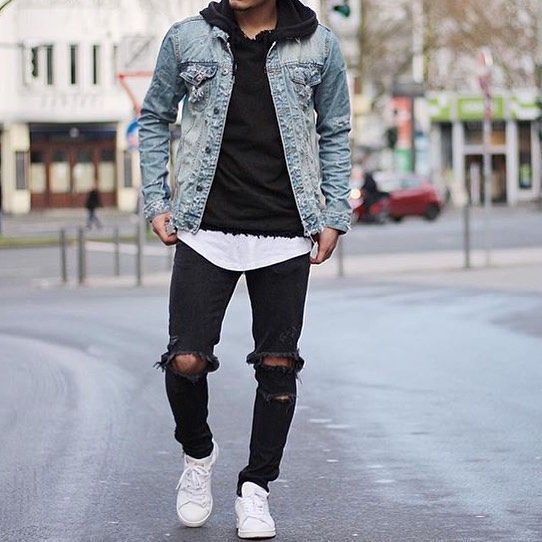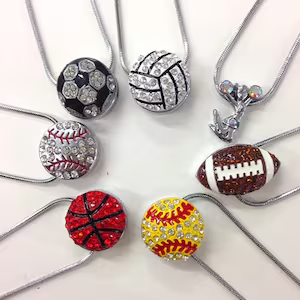Trademark Your Trend: Handbags So Hot They Need a Patent!
The Art and Craft of Modern Handbag Vibes
1. Overview of Current Handbag Trends
In the teeming jungle of fashion, where everything is more competitive than a game of musical chairs, handbag trends stand out as the chic kings and queens of accessories. This season—brace yourself for an avalanche of creativity—styles range from diminutive pint-sized marvels that fit no more than a credit card and some mints, to cavernous totes, perfect for impromptu grocery runs. They’re not just container bags; they are sculptures hanging from your arm. Mixing improbable materials like bamboo, recycled straps, and even rubber tires, modern handbags are where haute couture meets eco-sensibility. Additionally, geometric patterns that could double as optical illusions add a playful touch to the already whimsical world of handbags. Quirky closures, wild color palettes, and PDA-worthy personalization options have also snuck into vogue. Whether it’s retro metallics taking you back to a disco fever dream or minimalist modern elegance designed to whisper rather than shout, today’s handbags convey statements as loud as a rooftop party in Vegas.
2. The Role of Trademarks and Patents in Fashion
Ensuring your fashionable masterpiece isn’t snagged by an over-zealous competitor is a game of intellectual property chess that fashionistas need to navigate. Within this daring dance, trademarks and patents play bouncers at the door of originality, maintaining the designer’s crown jewels (and by this, we mean their ideas) as theirs alone. Trademarks serve as the trusty badge, swearing allegiance to the authenticity of the pieces. They protect not just logos and tags, but also unique fabric patterns or even distinct color combinations. Meanwhile, patents—often donned by more functional innovations—reward those who transform humble handbags into, say, solar-powered wonders or wands of smart technology. Their job is regulating the nitty-gritty tech or unseen wizardry that takes an accessory from ordinary to extraordinary. The legal nuts and bolts translate creativity into ownership, turning a spark of genius into a recognized artifact in the wild circus that is fashion. It’s fashion’s way of ensuring that the designer who dreams up a bag that could double as a picnic set gets more than just applause—they get security in their innovation.
3. Iconic Designers and Their Trademarked Creations
Step right up to peek into the hall of fame where illustrious designers radiate brilliance with their trademarked masterpieces. Picture the timeless audacity of Chanel’s quilted wonder, the handbag equivalent of a little black dress—an indispensable classic that whispers sophistication in any setting. Louis Vuitton’s monogrammed lovelies, standing tall in a sea of competitors, show that logos can evolve into a cultural emblem rather than mere decoration. Consider Hermès’ Birkin bag, a story of unexpected flight delays and lasting allure—a leather legend making waves in the collector’s market with countless celebrity endorsements. Meanwhile, in the land of playful prints, Prada’s quirky yet somehow enduring creations exhibit a flair for turning everyday wear into a moving art gallery. These avowed virtuosos have designed beyond just accessories; they’ve woven their characters into trademarks, cementing their legacy in the ebb and flow of fashion narratives. Remember, a trademarked creation is more than just leather and thread; it is the mark of enduring genius, codifying the essence of taste into exquisite arms of style. For those seeking a blend of tradition and innovation, the pelletteria viviani handbag offers a unique touch of Italian craftsmanship.
4. Case Studies of Successful Trademarked Handbags
As the fashion wheels turn, let’s spin into some brand narratives where trademarking has pivoted fabulous handbags into timeless icons with private jets ready for red carpets. Let’s start with the brand that defies lackluster introductions: the Fendi Baguette—compact, luxurious, and ever the trailblazer. It transformed from a trendsetter into a pop culture moment personified, largely owing to its protected status, allowing Fendi to guard not just reputation, but profit margins. Another exhilarating success story is found with Mulberry’s Bayswater, an asset in any boardroom—slowly, yet steadfastly, its trademark metamorphosed it into a symbol of skillful practicality in opulent form without falling prey to knock-offs. Gucci’s Dionysus collection, a more recent addition, rejuvenates the trademark tale. Marrying Gucci’s legacy with modern aesthetic vibes, it revels in its mix of audacity and innovation. These handbags don’t just grace shoulders—they have carved out niches in fashion lore, proving that a sprinkle of legal prowess alongside design visions paves the path to global adoration.
5. The Process of Trademarking: Steps and Considerations
Embarking on the quaint odyssey of turning your handbag fantasy into a legally protected marvel is an adventure akin to playing couture chess. First, ensure that your creation isn’t stepping on toes by conducting a thorough search for existing trademarks. This is your fashion reconnaissance phase—essential, thorough, and ideally aided by a legal eagle. Once the coast is clear, dive into the artsy labyrinth of documentation, where you meticulously gather descriptions to paint an intellectual property portrait that says “hands off” to would-be copiers. With this tapestry of trademarks in hand, you submit your application to the requisite authorities and cradle your nerves as you await their scrutiny—like fashion’s version of an Oscar nomination. Be ready for objections and requests for clarifications, you may feel momentarily like a designer on trial, but maintain fortitude. With the blessing of approval, your design elevates to more than just a clever bag—it becomes an officially recognized slice of fashion heaven, a step towards safeguarding your sartorial dreams against the pirate tides of imitation.






